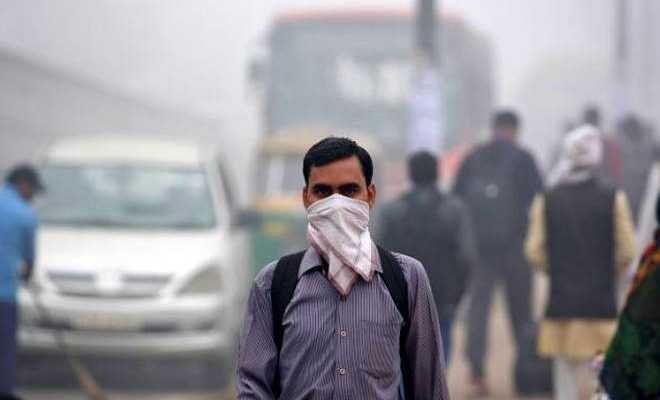Delhi pollution reaches critical level, prompts odd-even implementation, increase in ailments reported in residents

Last updated on February 20th, 2023 at 01:34 pm
Delhi pollution reaches critical level: Delhi recorded critical pollution levels for seventh consecutive day and is inching towards state of emergency air quality levels. The degrading air quality along with colder temperatures is leading increased health ailments in people including cold, cough, sore throat and itching eyes.
For 24 hours, the AQI level of 476 has showed that air pollution in Delhi and NCR has remained at an emergency level for over 48 hours as on Tuesday.
Commission on Air Quality Management’s member, Arvind Nautiyal, has asked in a letter to Central Pollution Control Board (CPCB) chairman to implement various measures required to tackle the situation under Union Environment Ministry’s Graded Response Action Plan (GRAP). According to the plan the required measures include implementing odd-even road rationing scheme, halting construction activities and stopping entry of trucks into Delhi.
The letter read, “Till a mechanism is set up by the Commission, as an interim measure, CPCB is entrusted with the task of operationalizing and monitoring GRAP measures, until further orders.”
CPCB Chairman S.D. Meena has said that an internal meeting is scheduled for Wednesday morning to assess the emergency measures implementation. Union environment secretary R.P. Gupta also hinted of implementing GRAP to minimize the rising pollution levels in capital.
Previous years have seen GRAP measures like odd-even scheme and stooping of construction activities in Delhi being implemented to reduce the pollution levels and improve air quality. This was under the directives of the Delhi government and Environment Pollution (Prevention and Control) Authority (EPCA). Last month the authority was dissolved and the new Commission was formed.
Emergency pollution level, according to GARP, is considered when concentration PM 2.5 or PM 10 cross the threshold of 300 and 500 micrograms per cubic meter air. The 24-hour exposure limit of PM 2.5 is 60 µg/m3, and of PM 10 is 100 µg/m3. Their levels had peaked at 644 µg/m3 and 779 µg/m3 by Tuesday afternoon before it dropped, but around 9 pm the threshold levels still remained critical.
Deterioration of air quality in the capital region is due to an amalgamation of various factors like high moisture levels, calm winds and pollutants due to burning of stubble. Ministry of Earth Sciences’ (MoES) air quality monitor SAFAR reports that the share of PM 2.5 in Delhi’s air from stubble burning was near 22%, mainly noticed in Punjab, Haryana, UP, Uttarakhand.



